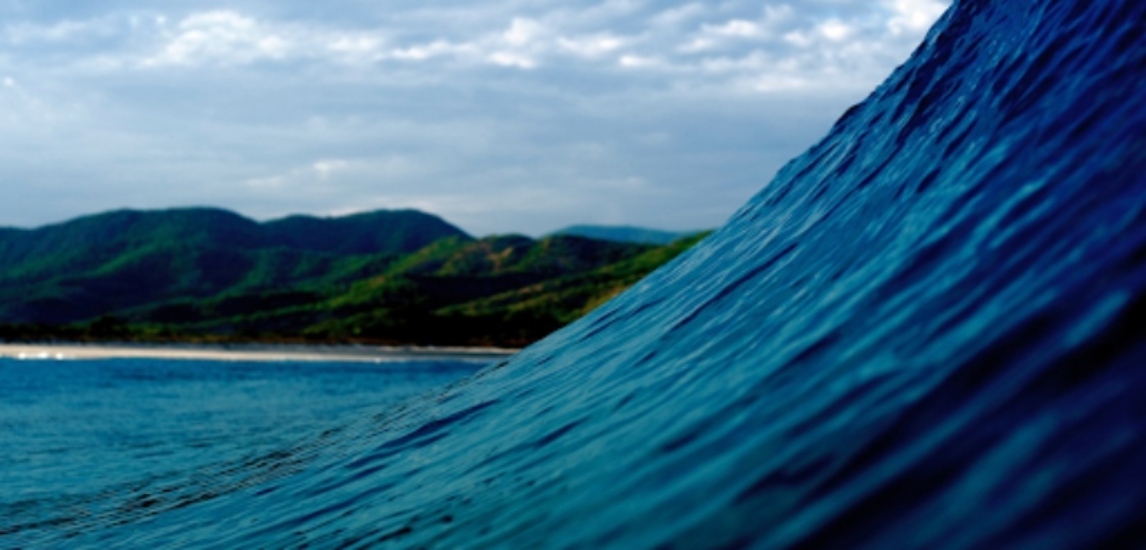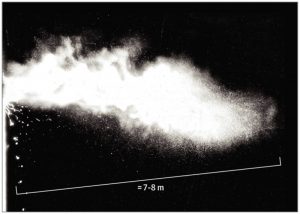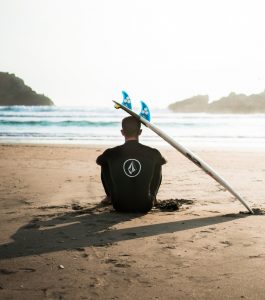
We were thrilled to have Katie Day, Surfrider's chief environmental scientist, as our guest speaker this month to share her knowledge of COVID-19 and how it might shape our experiences of recreating at the beach. Surfrider published COVID-19 & Beach Water Quality written by Katie Day: It is continually updated as new information is confirmed.
Katie fronted this conversation by noting that this is a summary of scientific literature and that she is not an epidemiologist, infectious disease expert, or healthcare worker. This is not medical advice, so please consult your doctor if you have health concerns.
Surfrider responded to the COVID-19 outbreak with the goal of ensuring that our network stays informed, our volunteers remain safe, and that our policies are reflective of health and safety protocols as instructed by the CDC (Center for Disease Control). It is with that research and intent that Surfrider has chosen to pause beach clean-ups, in-person events, and Blue Water Task Force operations. COVID-19 takes 2-14 days for symptoms to appear (if at all), which adds complexity to controlling the virus and ensuring health and safety in our communities. As we gather more research on the virus and understand posed risks, we can identify whether it is safe to resume some of these activities.
Since this virus is novel (new) we have limited knowledge of its properties. New information and findings are ever-changing and because of this, Katie encourages us to carefully choose the sources of information we absorb. She directs us to scientists and encourages us to consider the source. Here are some trusted information sources that have been beneficial to Surfrider:
- CDC Coronavirus Website
- WHO Open Access Research Database
- Water Research Foundation April 2020 Webcast
- Water Research Foundation March 2020 Webcast
Transmission Routes
Understanding transmission routes of the virus can help ascertain whether an activity poses a threat or not. We know that the virus is spread primarily through the air, and close person-to-person contact. It’s possible that fomites c can carry the virus, and we are keeping a close eye on water as a transmission route.
The infectious dose, or the amount of virus needed to establish an infection, is unknown. For some diseases, it can take hundreds to thousands of particles to establish an infection, while others can take millions. The range is wide, but looking at how fast SARS-CoV-2 has spread, scientists infer that the infectious dose is low.
Air Transmission
Air transmission, (essentially through coughing, sneezing, or simply talking), is the easiest way for the virus to spread. It is considered the leading cause of transmission because we can expel droplets and aerosols of saliva that could potentially host the virus. The CDC recommends that we keep 6 feet apart because droplets can only travel up to 6 feet; however, aerosols can remain airborne. In studies of aerosol in an indoor environment, the viral particles have been known to stay airborne for 3-8 hours. Katie provided this amazing photo from “Multiphase Turbulent Gas Cloud From a Human Sneeze. [23-27 feet]” (Image from Dr. Bourouiba’s paper published on (JAMA) of the span and length of the cloud of projectiles from a sneeze.
Katie references recent case studies that provide increased evidence for the notion that an outdoor arena is a lower risk because of the added influence of wind or breeze dispersing the air particles, but still a focused study has yet to confirm.
Katie affirms that an outdoor area can still pose a risk and that we should follow the guidance of the CDC. You can learn more about masks here: FDA Face Mask Resources
What About Surfaces?
Fomites are the scientific term for an inanimate surface of an object that is contaminated with the virus and could be a transmission route. Fomites are the reason the CDC recommends we wash our hands so frequently along with commonly touched surfaces. Katie referenced articles from The New England Journal of Medicine and The Lancet to summarize how long SARS-CoV-2 can stay on a surface with different information.
Plastic/ Steel 3-7 days
Glass- 4 days
Paper Money- 4 days
Cardboard- 24 hours
Paper 3 hours
Katie advises that when considering these numbers to understand that we are still unclear as to how long the virus can live on hands, how easily it can be transferred from hands to objects, and then back to hands. A recent article presented by Ferreti et al which speculates that approximately 6% of early transmission events were caused through a fomite in the environment.
What About Surfing?
When considering water quality, a constant consideration is raw undertreated sewage which can cause illness. This is why Surfrider created the Blue Water Task Force to study water quality and ensure safety for all beachgoers. Similar coronaviruses have been known to stay viable for several days in freshwater, however, it is considered low risk because of dilution and UV exposure.
Katie advises to check your local beach water quality before heading out and take extra consideration after rainfalls or if there have been any issues with local wastewater treatment plants.
Katie goes into even more interesting studies on the disease in her full presentation and welcomes any questions or concerns to be emailed to kday@surfrider.org. You can also watch the full virtual June Chapter Meeting here.


